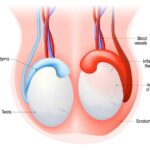Acute gonococcal urethritis (AGU) is a sexually transmitted infection (STI) caused by the bacterium Neisseria gonorrhoeae. This condition primarily affects the urethra, leading to inflammation and a range of uncomfortable symptoms. As a common STI, understanding its causes, symptoms, and treatment options is crucial for effective management and prevention.
What is Acute Gonococcal Urethritis?
Acute gonococcal urethritis is an infection of the urethra caused by Neisseria gonorrhoeae. The urethra, the tube that carries urine from the bladder out of the body, becomes inflamed due to bacterial colonization. This condition is most commonly transmitted through unprotected sexual contact, including vaginal, anal, and oral sex.
Symptoms of Acute Gonococcal Urethritis
The symptoms of AGU typically appear within 2 to 7 days after exposure. Common signs include:
- Painful urination (dysuria): A burning sensation during urination is one of the hallmark symptoms.
- Urethral discharge: A thick, yellow or green discharge from the penis or vagina is often observed.
- Increased urinary frequency: Frequent urges to urinate may occur.
- Redness and swelling: The urethral opening may appear red and swollen.
- Pelvic pain: In some cases, individuals may experience discomfort in the pelvic region.
It is important to note that some individuals, particularly women, may remain asymptomatic, making early detection challenging.
Causes and Risk Factors
The primary cause of AGU is infection with Neisseria gonorrhoeae. Risk factors include:
- Unprotected sexual activity with an infected partner.
- Multiple sexual partners.
- A history of previous STIs.
- Engaging in sexual activity at a young age.
Diagnosis of Acute Gonococcal Urethritis
Accurate diagnosis is essential for effective treatment. Diagnostic methods include:
- Clinical evaluation: A healthcare provider will assess symptoms and medical history.
- Urethral swab: A sample of urethral discharge is collected for laboratory analysis.
- Nucleic acid amplification tests (NAATs): These tests detect the genetic material of Neisseria gonorrhoeae with high accuracy.
- Gram stain: Microscopic examination of the discharge can reveal the presence of gram-negative diplococci.
Treatment Options for Acute Gonococcal Urethritis
Prompt treatment is critical to prevent complications such as pelvic inflammatory disease (PID) and infertility. The standard treatment regimen includes:
- Antibiotics: Dual therapy with ceftriaxone (an intramuscular injection) and azithromycin (oral) is recommended to combat antibiotic resistance.
- Follow-up testing: Patients should be retested 3 months after treatment to ensure eradication of the infection.
- Partner notification and treatment: Sexual partners should also be tested and treated to prevent reinfection.
Prevention Strategies
Preventing AGU involves adopting safe sexual practices:
- Use condoms: Consistent and correct use of condoms reduces the risk of transmission.
- Limit sexual partners: Reducing the number of sexual partners decreases exposure risk.
- Regular screening: Individuals at higher risk should undergo routine STI testing.
- Education and awareness: Promoting awareness about STIs and their prevention is vital.
Complications of Untreated Acute Gonococcal Urethritis
If left untreated, AGU can lead to severe complications, including:
- Epididymitis: Inflammation of the epididymis in men.
- Pelvic inflammatory disease (PID): Infection of the female reproductive organs.
- Infertility: Scarring and damage to reproductive tissues.
- Disseminated gonococcal infection (DGI): Spread of the bacteria to other parts of the body, such as joints and skin.
Acute gonococcal urethritis is a serious but treatable STI. Early diagnosis, appropriate antibiotic therapy, and preventive measures are key to managing this condition effectively. By understanding the symptoms, causes, and treatment options, individuals can take proactive steps to protect their sexual health and prevent the spread of infection.

